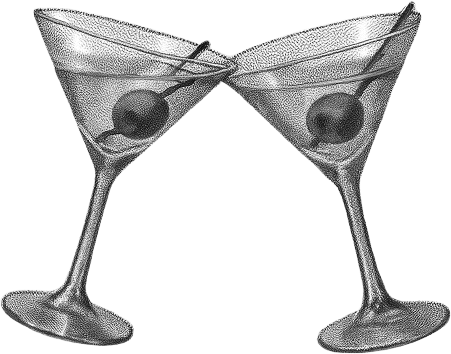The Only Influencer Rate Card Guide You Need

Paul Osas
7 min read

Let's talk about one of the most stressful parts of being a creator: money.
You know your content is valuable, your community is engaged, and your creativity is top-notch.
But when a brand asks, "What are your rates?" a moment of panic can set in.
How do you price your work without underselling yourself or scaring them away?
The answer is a clear, confident, and professional rate card.
It's the document that transforms you from a talented hobbyist into a professional business partner.
At Pitchbrand, we've reviewed thousands of rate cards and media kits from both the creator and brand side.
We know what makes a brand manager confident in their investment and what causes confusion and hesitation.
This guide will provide you with more than just templates; it will give you the strategic framework to build a rate card that gets you paid what you're worth.
First, What is a Rate Card (and Why It’s Not Your Media Kit)?
Let's be clear: a media kit is your visual resume. It tells the story of your brand, showcases your best work, and details your audience demographics. It's designed to get a brand excited about you.
A Rate Card is your menu of services. It's a document that lists your offerings and their prices.
It answers the question, "How much does it cost to work with you?"
While you can combine it into one document, having a separate rate card that you can send when a brand is specifically asking about pricing is a highly professional approach.
What Determines Your Rates?
Before we get to the examples, you need to understand the factors that justify your pricing.
Your value is a combination of these elements:
Follower Count and Reach: Yes, the size of your audience matters, but it's just the starting point.
Engagement Rate (Your Secret Weapon): This is more important to brands.
A 10% engagement rate on 5,000 followers is more valuable than a 1% rate on 50,000 followers.
It proves your community is real, active, and listening.
Your Niche and Audience Demographics: Do you have a specific, hard-to-reach audience? A niche audience is more valuable and commands higher rates.
Exclusivity Clauses: Agreements that limit work with competitors can raise your rates. Brands pay more for exclusivity
Content Quality and Production Effort: Are you shooting with a smartphone or a professional cinema camera?
Does your content require extensive editing, location scouting, or graphic design? Your production value is a billable skill.
Usage Rights and Exclusivity: This is where many creators leave money on the table.
If a brand wants to use your photo in a paid ad, that's worth significantly more than just a post on your feed. We’ll break this down later.
Influencer Rate Card Examples and Breakdowns
Here are three distinct rate card examples for different types of creators.
Use them as a blueprint to build your own.
Example 1: The "À La Carte" Menu (Ideal for Newer Creators and Nanos)
This approach is simple, clear, and great for opening a negotiation. It lists individual services with "starting at" prices.
It's approachable and doesn't lock you into firm prices, allowing for flexibility as you discuss the full scope of a campaign with a brand.
[Visual Layout: A clean, single-column list with your logo and contact info at the top.]
1 x Static Feed Post: Starting at $250
1 x Instagram Reel (up to 60s): Starting at $450
1 x Instagram Story Set (3 frames): Starting at $150
Link in Bio (24 hours): Starting at $75
TIKTOK
- 1 x TikTok Video (up to 60s): Starting at $400
CONTENT USAGE
- Rates include brand usage on their organic social channels with credit for 30 days. Extended usage for paid ads or web content is available. Please inquire for a custom quote.
Example 2: The "Bundled Packages" (For Growing Micro-Influencers)
This model encourages brands to invest in a larger campaign by showing the value of bundling services together.
It simplifies decision-making for brands and often increases your total earnings per project. It positions you as a strategic partner who understands campaign dynamics.
[Visual Layout: A clean, two or three-column layout showcasing different package tiers.]
COLLABORATION PACKAGES
The Spark ✨ Starting at $750
1 x Instagram Reel
1 x Instagram Story Set (3 frames)
5 x High-Resolution Photos for Brand Use
The Glow-Up 🔥 Starting at $1,500
2 x Instagram Reels
2 x Instagram Story Sets (3 frames each)
1 x Static Feed Post
10 x High-Resolution Photos for Brand Use
30-day usage rights included
The Takeover 🚀 Starting at $2,800
3 x TikTok Videos
2 x Instagram Reels
Monthly Exclusivity (in your category)
15 x High-Resolution Photos
90-day usage rights for organic & paid ads included
Custom packages are available to fit your campaign goals.
Example 3: The UGC & Content Creation Menu (For UGC Specialists)
This rate card is perfect for creators who specialize in creating content for brands to use on their channels. The focus is on the assets and usage rights, not your follower count.
Why it works: It clearly defines your value as a content creator, not just an influencer. This is a rapidly growing and highly sought-after service.
[Visual Layout: A clear menu focusing on deliverables and rights.]
UGC CONTENT CREATION
All content is delivered fully edited. Raw footage available upon request.
VIDEO ASSETS
1 x UGC Video: $200
3 x UGC Videos: $550 (Save $50)
5 x UGC Videos: $850 (Save $150)
PHOTO ASSETS
5 x High-Resolution Photos: $250
10 x High-Resolution Photos: $450
CONTENT USAGE RIGHTS
Standard (Included): 3 months of brand usage on organic social media channels.
Paid Ads License (+40% of base rate): Rights to use content in paid digital advertising for 3 months.
Full Buyout (+150% of base rate): Perpetual, worldwide rights for web, digital ads, and print.
How to Charge for Usage Rights and Exclusivity
This is where professional creators maximize their income.
Usage Rights
When a brand wants to use your content in paid advertising (e.g., as an Instagram ad, on their website banner, in an email newsletter), they are getting more value from it.
You must charge for this.
A standard starting point is to add 25-50% of the base rate per month for paid ad usage.
Exclusivity
If a brand asks you not to work with any of their competitors for a certain period (e.g., 30 days during a campaign), they are limiting your ability to earn from other brands.
This requires a premium. You can charge an exclusivity fee, calculated as 20-30% of the total campaign cost**.**
Design and Best Practices
-
Your rate card should visually match your media kit and overall brand identity.
-
Use online design tools like Canva to create a stunning, professional-looking document.
-
Always send your rate card as a PDF**.** This maintains your formatting and looks professional. Name it clearly:
[YourName]_RateCard_2025.pdf. -
Keep your rate card to one page**.** Be concise and make it easy for brand managers to read.
How Brands Read Your Rate Card
From our experience, here’s what a brand manager is thinking when they open your rate card:
-
"Is this clear?" A confusing, cluttered rate card is an immediate red flag. Simplicity wins.
-
"Is this professional?" They are looking for signs that you treat your work like a business.
-
"Does this fit our budget?" Providing packages or "starting at" prices gives them options and opens the door for negotiation.
-
"Is the value justified?" Your rates should feel aligned with the quality of your portfolio and the engagement stats in your media kit.
Your rate card is more than a list of prices; it's a declaration of your professional value.
It shows that you understand the market, respect your work, and are ready to be a serious partner.
Use these examples as a starting point. Adjust the numbers based on your experience, niche, and engagement.
Be confident. Be clear. And remember that your rate card is a living document. As your influence and skills grow, so should your prices.
Ready to send your professional new rate card to brands that are actively looking for talented creators?
Sign up to connect with companies that value and are ready to invest in high-quality, creative collaborations.

